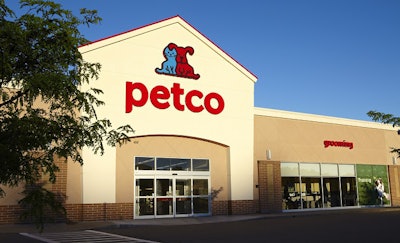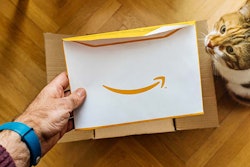
Artificial flavors, colors and preservatives have long been on the list of ingredients many consumers prefer to avoid, in both human and pet foods. For example, a Packaged Facts survey conducted earlier this year showed 40 percent of U.S. human food shoppers chose “no artificial ingredients” as an especially appealing characteristic; another Packaged Facts survey aimed at U.S. pet owners found 57 percent somewhat or strongly agreed they place a priority on buying pet foods with natural ingredients.
Nielsen data indicated 29 percent of U.S. shoppers said avoiding artificial ingredients was important when purchasing pet treats. And this is definitely a global phenomenon, also influencing product development: Mintel data showed “no additives or preservatives” has ranked as the top health claim globally for human foods since 2012, appearing on 14 to 17 percent of new product launches.
Now Petco, one of the largest pet specialty retailers worldwide, is publicly declaring battle on artificial ingredients. In announcing its intent to drop all pet foods and treats containing such ingredients from its stores (all in the U.S., Mexico and Puerto Rico) starting in January, the chain cited an online survey conducted by Edelman Intelligence. In that survey, 87 percent of U.S. pet owners said feeding pet food with no artificial flavors, additives or preservatives is important to pets’ health and well-being, with 59 percent of veterinarians agreeing pet owners should actively seek foods without those ingredients. (Note that while the survey included 1,300 pet owners, only 100 vets responded.)
Petco making $100 million gamble?
The announcement from Petco included a quote from its CEO, Ron Coughlin, referencing the company’s commitment to putting pet health first, yet saying, “Some may question whether this makes good business sense.” Indeed, according to Bloomberg, this move will affect about US$100 million in annual sales of the products Petco is vowing to drop.
Yet, while US$100 million is certainly not chump change, it represents only about 2.5 percent of Petco’s total annual sales of about US$4 billion, according to Bloomberg. Meanwhile, the retailer is facing an increasingly competitive and disruptive landscape, challenged not only by e-commerce giants like Amazon and Chewy but also by the ongoing migration (and subsequent sales success) of natural and other premium pet food products into mass market outlets — including many brands that had previously been exclusive to pet specialty.
I’ve heard rumors about the brands Petco is planning to drop or ask to re-formulate; not surprisingly, the cast-off brands include many also sold in the mass channel and perhaps being targeted for that reason alone. Now, it’s not at all unusual for pet specialty retailers, especially independents, to drop pet food brands that start to spread to other channels. Likewise, many independent pet retailers base their selections of which pet foods to stock on the ingredients that are, and are not, on the labels. Some retailers have become quite practiced at reading ingredient labels and even demanding sourcing information from pet food companies.
Petco’s inspiration: independent pet stores
And in fact, with this move, Petco is seeking to emulate some independent pet retailers, according to an interview Coughlin held with Mark Kalaygian of Pet Business magazine. “We think that a lot of these retailers do a great job, and part of our ambition from a merchandise standpoint, particularly with food, is to be the scale specialty independent — meaning, we look out for the pet’s nutritional needs and give informed nutritional guidance in the aisle. Some of these independent specialty players do that very well, and they set the bar that we are looking to match or beat,” Coughlin said.
If Petco is following the independent model, why doesn’t it just quietly drop pet foods with artificial ingredients and/or selling in mass? Well, with 1,500 stores, they are a big company, likely making it impossible to do anything quietly. More importantly, they are betting on earning good PR, and ideally loyalty, from pet owners by making this move so publicly — and let’s face it, they certainly have the financial resources to make a big splash. Petco has launched an all-out media blitz with this announcement, not just with press releases, ads and sponsored content in many pet-related media, but also parading Coughlin around to the financial media like Bloomberg.
Burning pet food questions remain
Only time will tell if Petco’s move pays off; it will be May 2019 before all the banned products are even gone from their stores, according to the company’s plan. Meanwhile, other questions arise, including how some of the affected brands and companies will react, both short term and long term. Petco notified them before making the announcement and is giving them time to reformulate their products if they choose to, but what’s next for the brands that don’t? Will Petco be able to recoup sales lost from the banned brands with increased sales from others?
More significant questions involve the overall pet food market. Will other large pet retailers follow Petco’s lead? If they do, will some of these brands lose enough sales to be taken off the market, or will they continue to find other retail homes online and in mass market? And, if this move helps Petco remain competitive and grow, will it also create a “rising tide lifts all boats” scenario, helping the entire pet specialty channel stay relevant and competitive in the rapidly changing retailing landscape? Or will it make it even more difficult for independent pet retailers — the ones Petco says it admires — to keep their share of pet food shoppers?


















